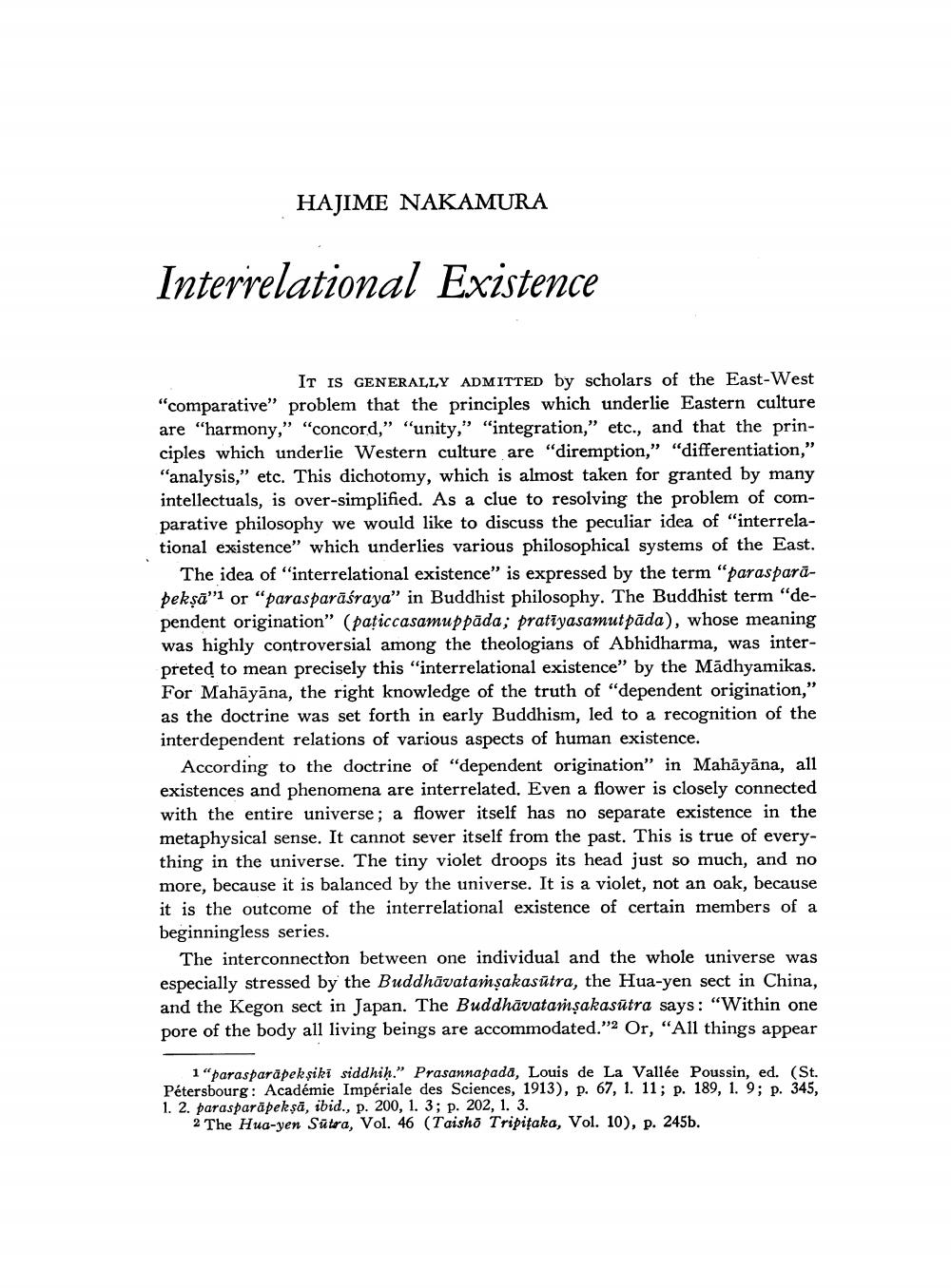________________
HAJIME NAKAMURA
Interrelational Existence
IT IS GENERALLY ADMITTED by scholars of the East-West "comparative" problem that the principles which underlie Eastern culture are "harmony," "concord,” "unity," "integration,” etc., and that the principles which underlie Western culture are “diremption," "differentiation," "analysis," etc. This dichotomy, which is almost taken for granted by many intellectuals, is over-simplified. As a clue to resolving the problem of comparative philosophy we would like to discuss the peculiar idea of "interrelational existence" which underlies various philosophical systems of the East.
The idea of "interrelational existence” is expressed by the term "parasparāpekṣā"1 or "parasparāśraya" in Buddhist philosophy. The Buddhist term "dependent origination" (pațiccasamuppāda; pratīyasamutpāda), whose meaning was highly controversial among the theologians of Abhidharma, was interpreted to mean precisely this "interrelational existence" by the Mādhyamikas. For Mahāyāna, the right knowledge of the truth of "dependent origination,” as the doctrine was set forth in early Buddhism, led to a recognition of the interdependent relations of various aspects of human existence.
According to the doctrine of "dependent origination" in Mahāyāna, all existences and phenomena are interrelated. Even a flower is closely connected with the entire universe; a flower itself has no separate existence in the metaphysical sense. It cannot sever itself from the past. This is true of everything in the universe. The tiny violet droops its head just so much, and no more, because it is balanced by the universe. It is a violet, not an oak, because it is the outcome of the interrelational existence of certain members of a beginningless series.
The interconnection between one individual and the whole universe was especially stressed by the Buddhāvatavşakasūtra, the Hua-yen sect in China, and the Kegon sect in Japan. The Buddhāvatamșakasūtra says: "Within one pore of the body all living beings are accommodated.”2 Or, "All things appear
1 "parasparapeksiki siddhih." Prasannapada, Louis de La Vallée Poussin, ed. (St. Pétersbourg : Académie Impériale des Sciences, 1913), p. 67, 1. 11; p. 189, 1. 9; p. 345, 1. 2. parasparäpeksā, ibid., p. 200, 1. 3; p. 202, 1. 3.
2 The Hua-yen Sūtra, Vol. 46 (Taisho Tripitaka, Vol. 10), p. 245b.




